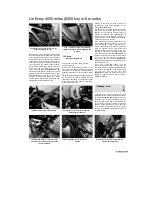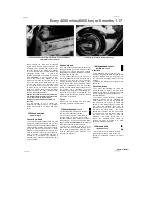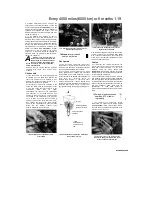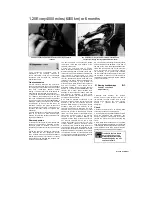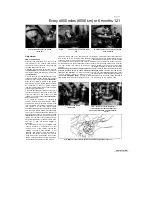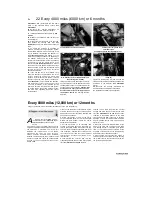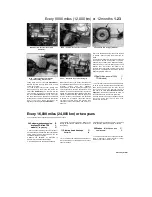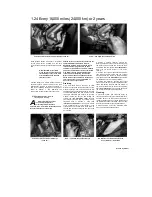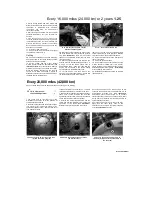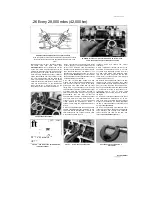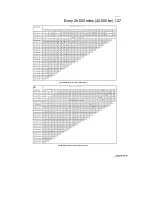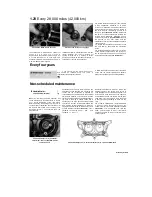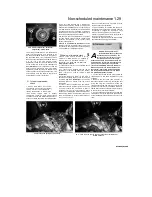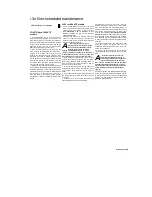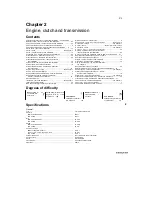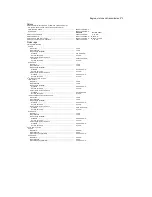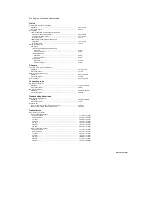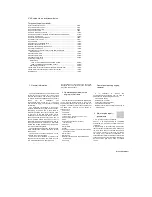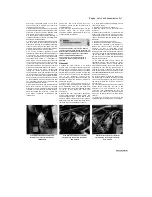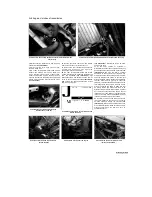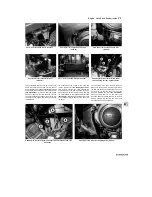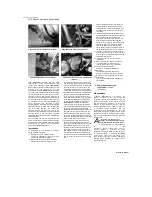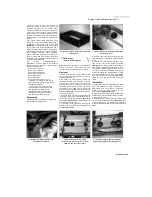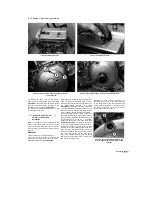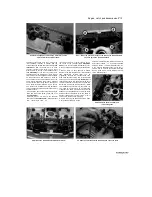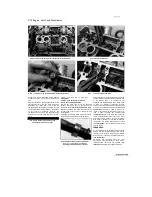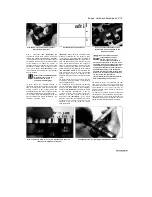
i.3o Non-scheduled maintenance
34 Front forks - oil change
TDM, TRXand 1995 XTZ
models
1 Fork oil degrades over a period of time and
loses its damping qualities. The forks do not
have drain screws so it is necessary to remove
them from the fork yokes (see Chapter 6, Section
6) and remove their top bolts, spacer and spring
assembly so that they can be turned upside
down and pumped to expel the fork oil.
2 Once the forks have been removed from the
yokes, refer to the appropriate part of Section 7,
Chapter 6, to unscrew the fork top bolt and
withdraw the spacer and spring assembly. Note
that there is no need to slacken the damper rod
bolt as advised in the early part of this procedure
because this relates to fork overhaul. Turn the
fork upside down and pump the inner tube and
slider to expel as much oil as possible.
3 Refill each fork with the specified amount and
type of fork oil (see Chapter 6 Specifications) and
install the fork spring, spacer and top bolt. Take
careful note of how the oil level is measured and
the importance of the level being identical in
each fork. Refer to the final part of the relevant
reassembly procedure in Chapter 6, Section 7 for
details.
1989 to 1994 XTZ models
4 Fork oil degrades over a period of time and
loses its damping qualities. These models are
equipped with drain screws in the fork sliders
(see illustration 7.59 in Chapter 6)
and
therefore changing the fork oil is a relatively
straightforward task.
5 Position the bike on an auxiliary stand and
support it under the engine so that the front
wheel is off the ground. Unscrew the fork top bolt
from the top of each fork tube.
Warning: The fork spring is
pressing on the fork top bolt (via the
spacer) with considerable pressure.
Unscrew the bolt very carefully,
keeping a downward pressure on it and
release it slowly as it is likely to spring clear. It
is advisable to wear some form of eye and face
protection when carrying out this operation.
6 Hold a piece of thick card to act as a chute
beneath the fork drain screw on one fork slider,
then remove the drain screw and allow the oil to
drain. Pump the fork to expel all of the oil. Now do
the same on the other fork leg.
7 Slide the fork tube down into the slider and
withdraw the spacer, spring seat and the spring
from the tube. Note which way up the spring is
fitted.
8 Check the condition of the sealing washers on
the drain screws and screw them back into the
fork sliders.
9 Slowly pour in the specified quantity of the
specified grade of fork oil (see Chapter 6
Specifications) and pump the fork at least ten
times to distribute it evenly; the oil level should
also be measured and adjustment made by
adding or subtracting oil. Fully compress the fork
tube into the slider and measure the fork oil level
from the top of the tube
(see illustration 7.26b in
Chapter 6).
Add or subtract fork oil until it is at the
level specified at the beginning of the Chapter.
Note that bike must be upright when the oil level
is measured and the oil level must be the same in
each fork.
10 Extend the fork tube and slider fully, then
install the spring, the spring seat, with its
shouldered side fitting down into the top of the
spring, and the spacer.
11
Apply a smear of grease to the top bolt O-
ring and thread the bolt into the top of the fork
tube.
Warning: It will be necessary to
compress the spring by pressing it
down using the top bolt to engage the
threads of the top bolt with the fork
tube. This is a potentially dangerous operation
and should be performed with care, using an
assistant If necessary. Wipe off any excess oil
before starting to prevent the possibility of
slipping.
Keep the fork tube fully extended whilst pressing
on the spring. Screw the top bolt carefully into the
fork tube making sure it is not cross-threaded and
tighten it to
the
specified torque setting (see
Chapter 6 Specifications).
Staned by Stalker
I
A
A

